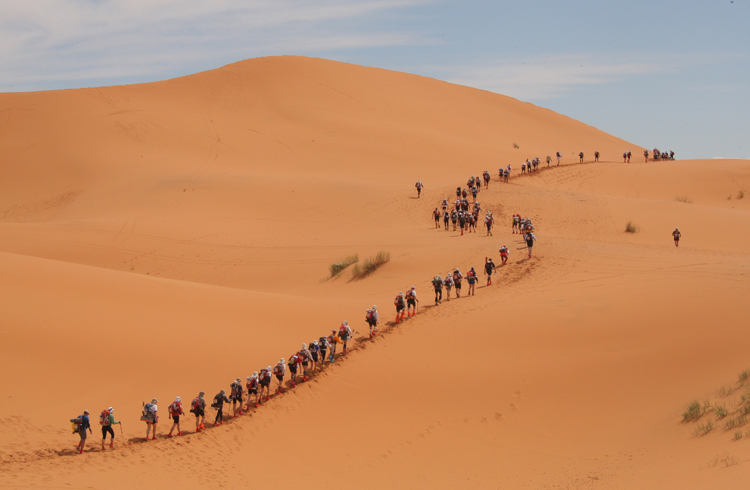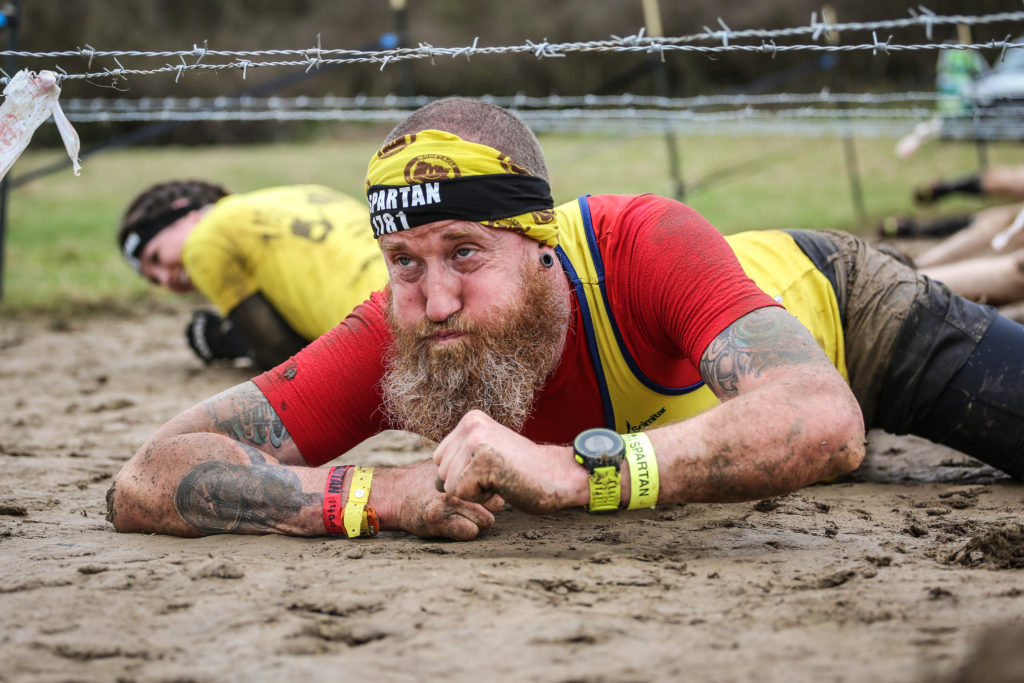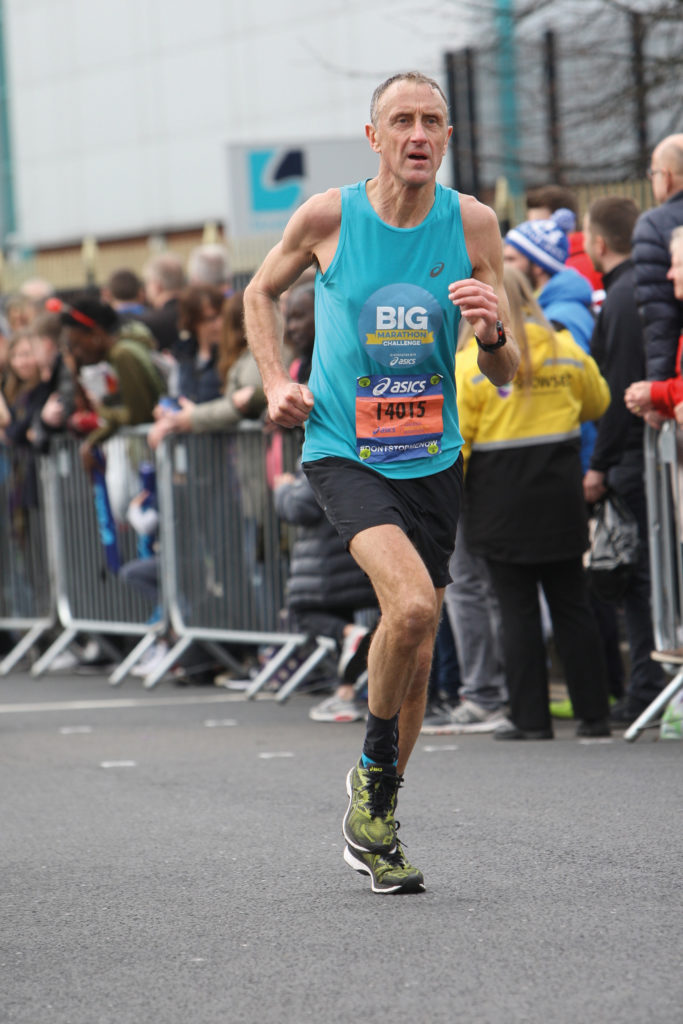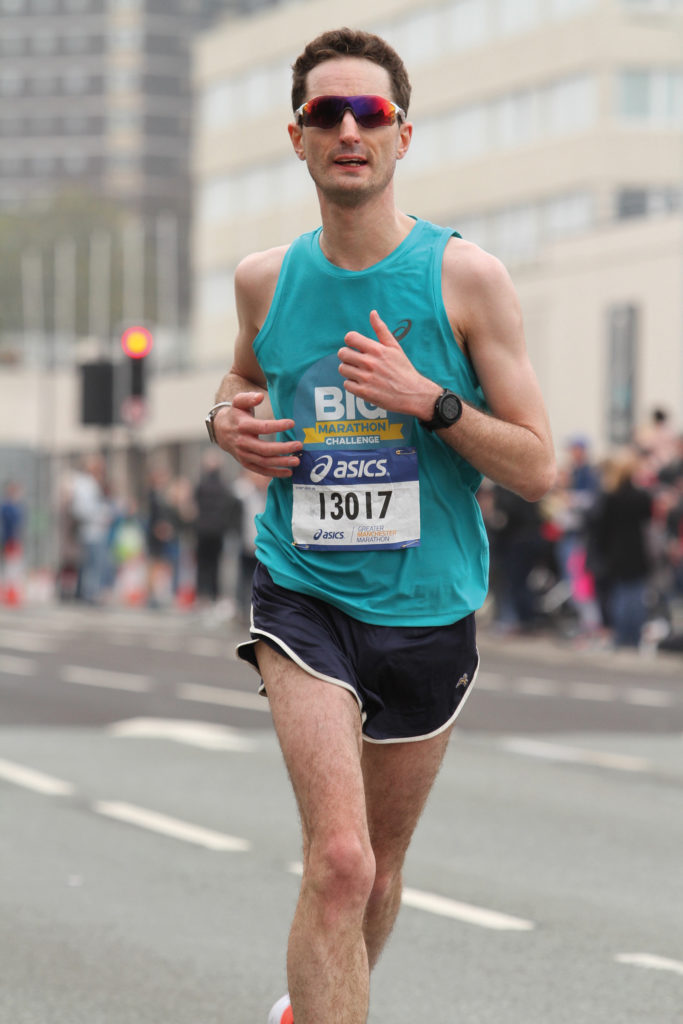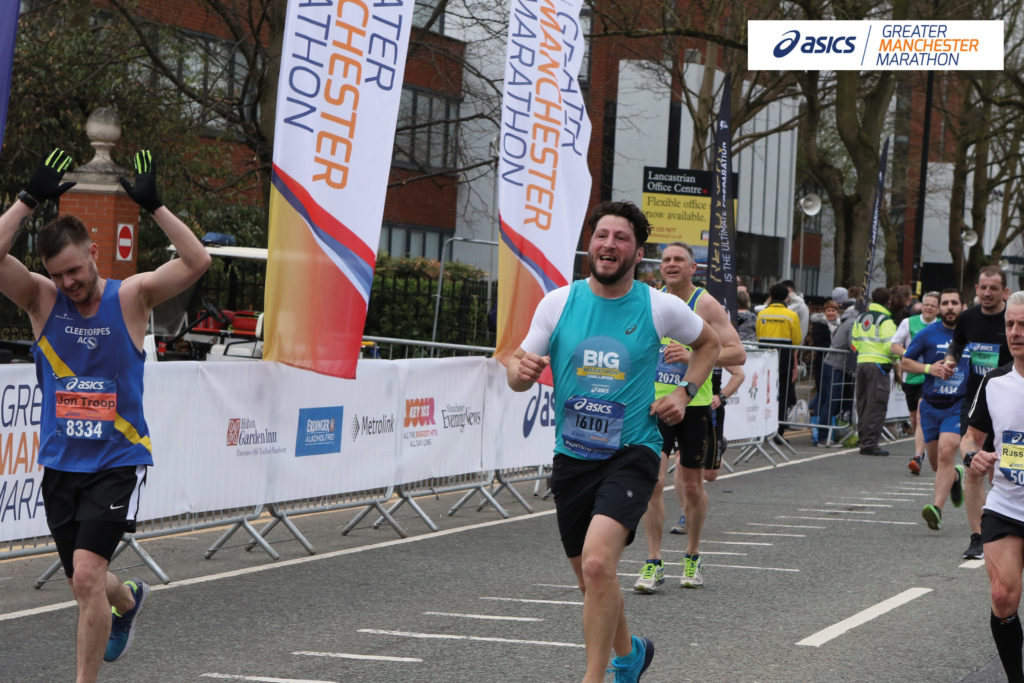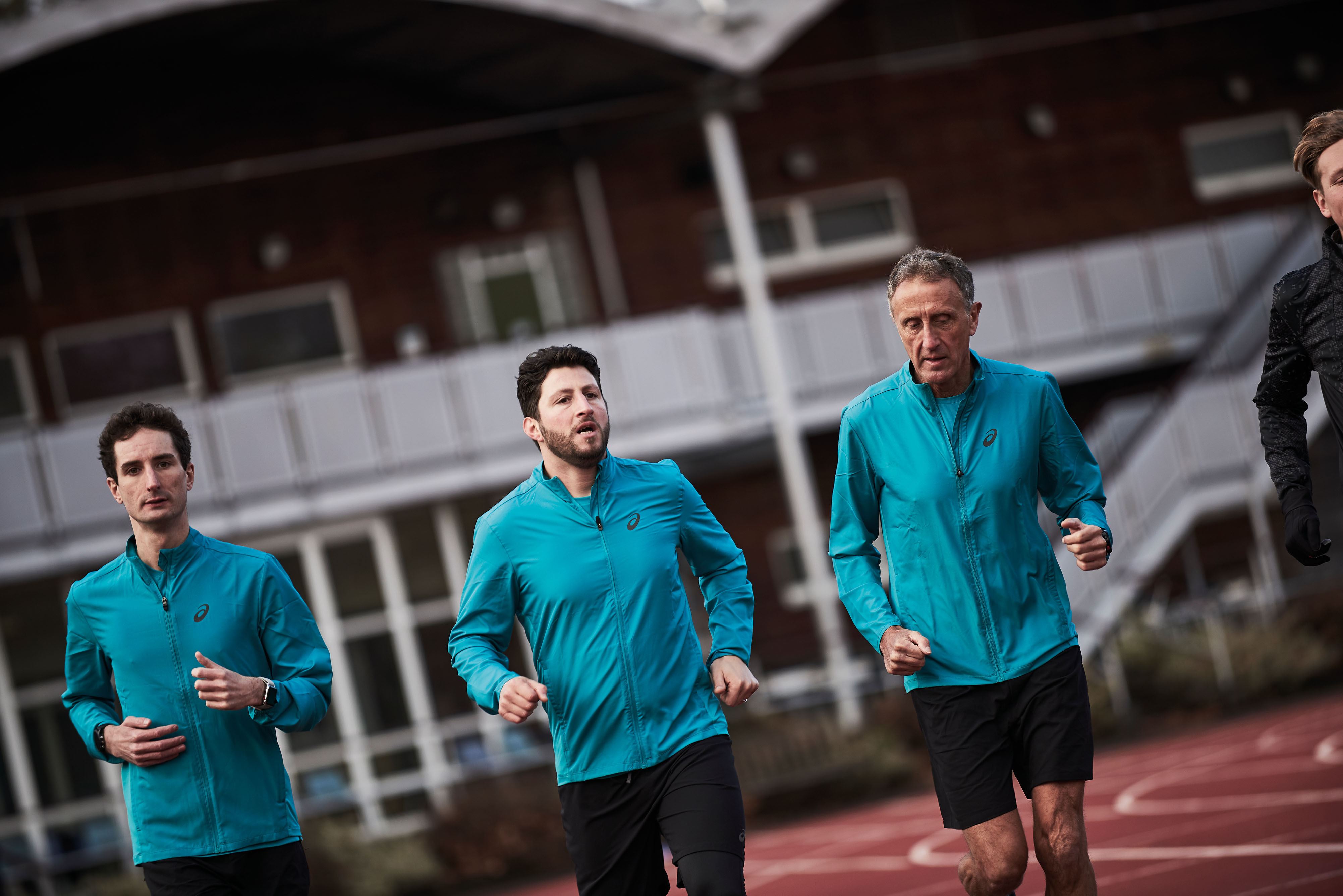Six marathons in seven days, across the Sahara desert. That’s what I’d signed up for. The Marathon des Sables, I’d been told, was the “toughest footrace on earth”: the event that defined the word ultramarathon. It can get as hot as 50 degrees Celsius out there, and don’t even get me started on the sandstorms, a friend had said.
I’d also heard a lot about blisters. In fact, that was the one thing that everyone had agreed on: blisters – and how it was impossible not to get lots of them.
“Shit, this is going to be hard enough already at my age,” I thought. “There must be a way to avoid getting blisters as well.”
There is no doubt that as one gets older, the physical side of these events becomes much more difficult. Approaching the age of 60, I was already having to work harder and harder to keep fit. The mental side though, in a sense, was becoming more manageable – largely because I was prepared to have a more generous and less limiting definition of what success means. I was always going to be slower than many of the other runners, so I decided that my challenge was to be able to finish each day’s miles and still feel like I could run the next day.
Which brings me back to the blisters.
The Marathon des Sables or “marathon of sands” is a 156-mile footrace, set up in 1986 by Frenchman Patrick Bauer. Participants run a series of six marathons – though the longest stage could be up to 55 miles in a single day – through the Sahara while the sun beats down on them and the winds whip up the sands so that it gets everywhere.
The combination of unrelenting heat, sand grains that make it into your shoes and socks and the fact that each day you have to get up and run a marathon all over again, makes blisters almost inevitable.
I was determined not to get any. Through friends of friends, I tried to find everyone I could who had managed to complete the race without blisters. There weren’t many, but there were a few – and I asked all of them to share with me exactly how they did it. I collated a list of about a half a dozen key things and decided that I would follow them religiously.

Life begins at 60: Peck says you’re never too old for an adventure
On the plane over to Morocco, a race organiser was briefing the British contingent. Among the list of instructions that he was working through, he made a throwaway remark about swimming.
“Look, when you get to the hotel today, make sure you really enjoy the pool, because when you get back from the race, you won’t be able to use it.”
Curious to know what it was that would put the pool out of action, I went over to ask. “Blisters,” he said. “It’s because you’ll have blisters and they don’t want you to dirty the pool.”
I asked him what would happen if I didn’t have any and, without hesitation, he replied: “Oh you will. I can promise you, you will.”
All right, well, imagine I don’t have any blisters, I said to him, what will I need to do before I can get in the pool?
“You’ll have to get a doctor’s note confirming that it’s safe for you to swim,” he said.
I went back to my seat smiling. Before, I just didn’t want to get any blisters, now I had a reason not to get any.

Rocky road: a runner trudges ever onwards
My primary goal was, of course, to get to the end of the race. To do this, I needed to make sure that I avoided being overtaken by one of the two camels that swept up the stragglers. If you saw a camel, you were advised to get a move on because, once it passed you, that meant you were out of the race.
I was slightly concerned that the time-consuming routine I’d developed to protect my feet might end up costing me the race. Every couple of hours, I would stop, take off my two pairs of socks and swap them for fresh ones – hanging the sweaty pair off my rucksack to dry out as I ran. To be honest, the way that I had rigged up my footwear – with gators made out of parachute silk and specialist shoes – it was hard to see how any sand was going to get near my feet, but, nevertheless, I stuck to the process.
By the end of day one, it was clear that it was paying off. As people completed each stage of the race they were led to the Médecins Sans Frontières tent. Here, French doctors and nurses would allegedly cut the loose skin from around their blisters and slap iodine all over them, at which point, you could usually hear the patient scream all the way from your own tent! Once patched up, the runners would be given a kind of shower cap to keep their feet clean, before they were then dropped off at their tents for the night.
One of the guys who turned up at our tent was in a bad way. He was an ex-army officer from the Guards and he looked tough. Failure isn’t really an option for the Guards, and you could tell that he still had that mentality. Having survived the merciless slapping on of iodine from the medics, he stumbled into our tent, which was essentially a black, sideless bivouac with a rug sheet on the ground. We got him some food and helped him into his sleeping bag.
At some point in the middle of the night, he must have needed a pee, because I remember waking in the shadows to see him crawling out of the tent on his hands and knees, unable to put any pressure on his feet.
Come dawn the next morning, there was a frenzy of activity as local Bedouin tribesmen whisked away the black canvas of the tents, sending sand flying and waking everyone with a shock. This would happen every morning and, each time, all hell would break loose as people scrambled to repack their gear and get some food in before the race started.
I looked over to our friend from the Guards and thought surely he’s never going to run today. He was sitting on the ground with a deeply pained expression as he unglued his weeping feet from the inside of his sleeping bag. But having successfully detached them, he slowly pulled on fresh socks and then his shoes. The whole process must have taken at least 20 minutes, all the while, I could see him grimacing as each sock went over his blisters. We helped him up with his kit and he hobbled over to the start line, one hand on my shoulder, the other clenched into a fist in pain.
It might seem counterintuitive to get everyone’s heart rate up before running a marathon, but each morning the race organiser, which was usually Patrick Bauer himself, would whip everyone up into a frenzy with a stirring pep talk, music and singing. Of course, the more the event went on and the more exhausted we all became, the more the necessity of this rabble-rousing start became clear. Eventually, we heard “Ready, steady, go!” and I watched as the Guard humbly set off into the distance with everyone else to run yet another marathon.
I stuck with him, day after day after day and, by the end of the race, the back of his foot was literally hanging off (see picture, below). He never let it stop him.
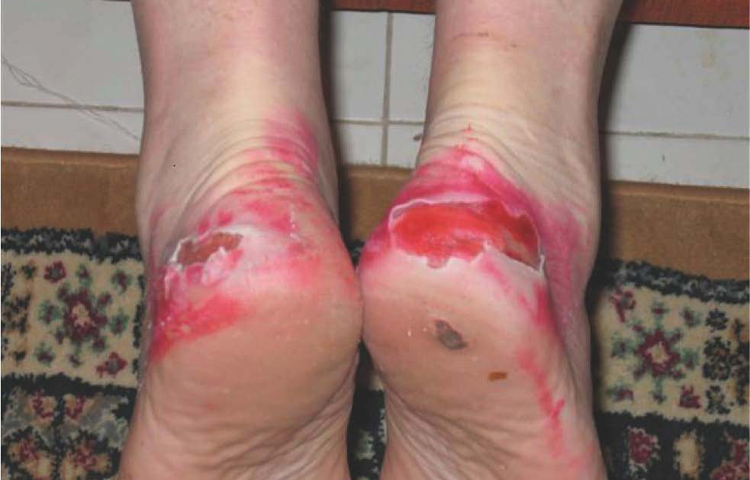
Blistering heat: the horrendous blisters suffered by one of Peck’s compatriots
I never did see a camel. In fact, much to my surprise, I completed all the different phases of the race in respectable times, finishing about three-quarters through the pack. But the real reward for my efforts was still to come.
On the first morning back at the hotel, hundreds of runners descended on the swimming pool. None of them could use it though – instead, everyone was forced to either hobble about or sit around on sun loungers, with their feet in bandages. I gazed out at the empty pool with a smile on my face, a pass from the doctor burning a hole in the pocket of my swimming shorts. I dived in. It was the nicest length that I’ve ever swum.
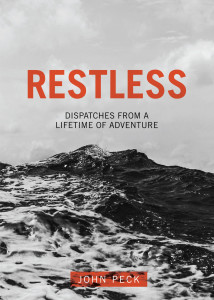 This is an edited extract from Restless: Dispatches from a Lifetime of Adventure by John Peck, foreword by neurologist and mountaineering doctor Charles Clarke (Rethink Press, £11.99). Buy the eBook for 99p on Amazon until 31 March
This is an edited extract from Restless: Dispatches from a Lifetime of Adventure by John Peck, foreword by neurologist and mountaineering doctor Charles Clarke (Rethink Press, £11.99). Buy the eBook for 99p on Amazon until 31 March

